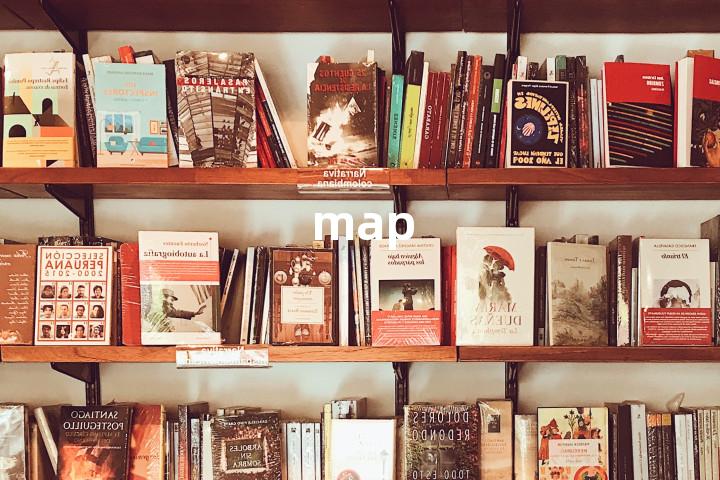3325英语网 单词
map的意思
map
英 [mæp]
美 [mæp]
- vt. 映射;计划;绘制地图;确定基因在染色体中的位置
- n. 地图;示意图;染色体图
- vi. 基因被安置
- n. (Map)人名;(法)马普

助记提示
1. map => mop, nap-.
2. nap- => napkin, napery, nappy, apron (a naperon => an aperon => an apron).
2. nap- => napkin, napery, nappy, apron (a naperon => an aperon => an apron).
中文词源
map 地图
缩写自拉丁语mappa mundi,世界地图,来自mappa,桌布,布料,词源同mop,napkin,apron.因早期地图绘制于布上而得名。mundi,世界的,词源同mundane.
英文词源
- map
- map: [16] Map is closely related to apron and napkin. It comes from Latin mappa, which denoted a ‘cloth’, ‘towel’, ‘sheet’, ‘table-cloth’, etc. This was used in the expression mappa mundī, literally ‘sheet of the world’, which referred to a graphical representation of the earth’s surface – a ‘map’, in other words.
=> apron, napkin - map (n.)
- 1520s, shortening of Middle English mapemounde "map of the world" (late 14c.), and in part from Middle French mappe, shortening of Old French mapemonde, both English and French words from Medieval Latin mappa mundi "map of the world;" first element from Latin mappa "napkin, cloth" (on which maps were drawn), "tablecloth, signal-cloth, flag," said by Quintilian to be of Punic origin (compare Talmudic Hebrew mappa, contraction of Mishnaic menaphah "a fluttering banner, streaming cloth") + Latin mundi "of the world," from mundus "universe, world" (see mundane). Commonly used 17c. in a figurative sense of "epitome; detailed representation." To put (something) on the map "bring it to wide attention" is from 1913.
- map (v.)
- 1580s, from map (n.). Related: Mapped, mapping. To map (something) out in the figurative sense is from 1610s.
双语例句
- 1. We drove east to Rostock, where my map led me astray.
- 我们驱车向东去罗斯托克,但地图却给我指错了方向。
来自柯林斯例句
- 2. It was even marked on the map as a scenic route.
- 它甚至还作为观光路线标在了地图上。
来自柯林斯例句
- 3. All we had to do was follow the map.
- 我们所要做的就是按照地图走。
来自柯林斯例句
- 4. Tony had an upside-down map of Britain on his wall.
- 托尼的墙上倒挂了一张英国地图。
来自柯林斯例句
- 5. We didn't have satnav, so the traditional map and compass took over.
- 我们没有卫星导航系统,因此使用了传统的地图加指南针。
来自柯林斯例句